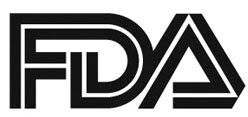Regulatory Approval Moves Ahead for Lurbinectedin in SCLC
A new drug application has been filed for accelerated approval with the FDA for lurbinectedin in patients with small cell lung cancer who have progressed after prior platinum-containing therapy, according to the manufacturer, PharmaMar.1 The filing was based on results from a phase II basket trial, presented at the 2019 ASCO Annual Meeting.

A new drug application (NDA) has been filed for accelerated approval with the FDA for lurbinectedin in patients with small cell lung cancer (SCLC) who have progressed after prior platinum-containing therapy, according to the manufacturer, PharmaMar.1The filing was based on results from aphase II basket trial, presented at the 2019 ASCO Annual Meeting.2
In the trial (NCT02454972), single-agent lurbinectedin demonstrated an overall response rate (ORR) of 35.2% in the second-line setting. The ORR consisted of all partial responses, which occurred in 37 of 105 patients. An additional 35 patients had stable disease, for a disease control rate of 68.6% (95% CI, 58.8%-77.3%). Overall, 65% of patients had a decrease in tumor size and responses occurred in 5 of 8 patients who had failed prior immunotherapy. Twenty-eight patients (26.7%) had progressive disease and 5 patients were not evaluable.
Investigators reported that the median duration of response was 5.3 months (95% CI, 4.1-6.4). They noted that the response rate was higher in patients with sensitive disease, defined as those with a chemotherapy-free interval (CTFI) ≥ 90 days. Among those patients, the ORR was 45% compared with 22.2% in patients with resistant disease (CTFI <90 days).
In the multicenter, single-arm study, investigators evaluated the safety and efficacy of lurbinectedin in patients across advanced solid tumors, including SCLC, head and neck cancer, neuroendocrine tumors, biliary tract cancer, endometrial cancer,BRCA1/2-mutant metastatic breast cancer, carcinoma of unknown primary site, germ cell tumors, and Ewing’s family of tumors.
The 105 patients in the SCLC cohort were enrolled between October 2015 and October 2018. The median patient age was 60 years (range, 40-83) and 35.2% of patients were aged ≥65 years. The ECOG performance status was 0 for 36.2% of patients, 1 for 56.2% of patients, and 2 for 7.6% of patients.
The median number of prior therapies was 1 (range, 1-2). Regarding response to prior platinum-based therapy, 8.6% of patients had a complete response and 66.7% of patients had a partial response. Fifty-seven percent (n = 60) of patients had sensitive disease and 43% (n = 45) of patients had resistant disease.
Overall, the median progression-free survival (PFS) was 3.9 months (95% CI, 2.6-4.6) and the 6-month PFS rate was 33.6% (95% CI, 24.0-43.1). In the sensitive subgroup, the median PFS was 4.6 months (95% CI, 3.0-6.5) and the 6-month PFS rate was 44.6% (95% CI, 31.2%-57.9%). In the resistant population, the median PFS was 2.6 months (95% CI, 1.3-3.9) and the 6-month PFS rate was 18.8 months (95% CI, 6.8-30.9).
At a median follow-up of 17.1 months, the median OS was 9.3 months (95% CI, 6.3-11.8) and the 12-month OS rate was 34.2% (95% CI, 23.2-45.1). The median OS was 11.9 months in sensitive patients versus 5.0 months in resistant patients.
The accelerated approval allows for the submission of an NDA for evaluation based on results of phase II drug trials for the treatment of diseases with unmet needs. Notably, the treatment for SCLC has not changed substantially in more than 2 decades, with the approval of topetecan in 1996. Historically, response rates with that agent in this setting range from 5% to 24%, with a median overall survival of 6 to 8 months.
“It is great to finally see some new therapeutic options arriving for small cell lung cancer patients, who represent a major unmet medical need,” Charles Rudin, MD, chief of the thoracic oncology service and co-director of the Druckenmiller Center for Lung Cancer Research at Memorial Sloan Kettering Cancer Center in New York, NY, said in a release.
Adverse events (AEs) across all grades occurred in 84.8% of patients, with 34.3% of patients experiencing a grade ≥3 AE. Serious AEs were observed in 10.5% of patients. AE-related discontinuations, dose delays, and dose reductions, occurred in 1.9%, 22.1%, and 26.3% of patients, respectively. There were no AE-related deaths.
The most common grade 1/2 AEs included fatigue (51.4%), nausea (32.4%), decreased appetite (21.0%), vomiting (18.1%), diarrhea (12.4%), constipation (9.5%), and neutropenia (5.7%). Grade 3/4 AEs included neutropenia (22.9%), anemia (6.7%), fatigue (6.7%), thrombocytopenia (4.8%), febrile neutropenia (4.8%), pneumonia (1.9%), increase ALT level (1.9%), skin ulcer (1.0%), and diarrhea (1.0%).
References
- PharmaMar Has Filed New Drug Application for Lurbinectedin With the FDA for the Treatment of Relapsed Small Cell Lung Cancer [press release]. Madrid, Spain: PharmaMar; December 17, 2019. %. Accessed December 18, 2019.
- Broderick JM. Lurbinectedin monotherapy demonstrates promising responses in second-line SCLC. June 2, 2019.www.targetedonc.com/conference/asco-2019/lurbinectedin-monotherapy-demonstrates-promising-responses-in-secondline-sclc. Accessed December 18, 2019.